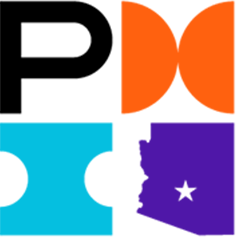Part 1: Learning to Crawl

The journey into resource management often starts with one, or several, of the following statements being broadcasted long and loud around a conference room table.
“We need resource management!! Let’s purchased (XYZ) tool that will provide it.”
“Our problem is that we don’t have enough people! We need resource management.”
“I need to prioritize my team’s work. I need some resource management!”
And, with those magic words, a decision is made to dive headfirst into the world of resource management - often without having the slightest idea of where to begin or even what the practice of resource management encompasses. Tools are purchased and some unfortunate soul is tasked with implementing “resource management”.
Whoa!!!! Slow down there… Take some time to learn to crawl and walk before you run full speed ahead into the world of resource management.
What is Resource Management?
Throughout my career I have heard the statement “we need resource management” more times than I can count. My responding question is always: “What does resource management mean to you?” While the solution of resource management may mean different things to different teams, the concept of resource management is quite defined within the resource management industry:
Resource management is the practice that uses information and processes to align skilled team members with the requirements and expectations of current and future projects.
Stop! Go back, and read that statement again.
Resource management is a practice. It is something that you must grow and develop, nurture and expand, and constantly monitor. It takes time, knowledge, and skill to successfully implement and maintain. I liken resource management to playing chess. You must be able to identify when to move the right people, with the right skills, into the right location to gain maximum advantage or ROI on your workforce.
What Resource Management is Not
Just as you must understand what resource management is, you also need to understand what resource management is not.
- Resource Management is not a tool –A tool (commonly known as an application), will not provide you resource management. It will provide you with a location to gather and analyze the fact-based data that you need for the resource management iterative process.
- Resource Management is not people management – If you are understaffed for the number of projects that your team has in the portfolio no amount of resource management will fix this. However, it can be used to identify that you are understaffed and provide the data to support that conclusion. After that identification, it is up to Leadership and HR to help resolve those issues.
- Resource Management is not task management – When team members are overloaded or jumping from one task to the next extinguishing fires, managers often assume they need resource management. Remember, resource management is about aligning the appropriate skilled team member with the appropriate project at just the right moment. It will not alleviate the expectation that you drop everything you are doing to put on your firefighting hat. Only project control process and changing expectations can assist you with this.
Steps Towards Establishing Your Resource Management Practice
Now that you have a better understanding of what Resource Management is and is not, you’ll need to understand how to get started. The first thing you need to know is that there is quite a bit of work that needs to happen before you can start building your resource management practice. This is your “crawling” stage.
I’ll just go ahead and state it - this stage can be very frustrating! With everyone screaming that they need immediate help, you may be tempted to skip this step entirely. I strongly urge you not to. This is when you gather your base, your building blocks. If you take the time to walk through each of the three steps below, you will have a good foundation to build your resource management practice.
1. Analyze if resource management is actually what you need to resolve your current pain point.
Look at what isn’t currently working. Write down where your team is struggling and be specific! Overloaded resources are absolutely a pain point, but how are they overloaded? Do you have one or two team members that can barely breathe because no one else has the skills to assist with the workload? Are your projects behind schedule because you frequently must stop what you are doing to jump onto something else? Is your entire team drowning because, even with focused work, the demand is simply too much for the available capacity? Put on your truth googles here, managers - A good manager will be able to identify where the issues are. Ultimately, will resource management really resolve your issues?
2. Identify a single location to house the data that you need to gather for resource management analysis.
This may be the tool your company has been itching to purchase from the start! I recommend using an application that is designed to provide both project and resource management activities. The practice of resource management is much easier when you have a single source of information to pull from.
3. Compile your foundational data.
This often means that you have months of information gathering to complete, but this is a critical step in the development process. As you gather the necessary information, you will want to ensure that you capture it in a manner that can be consistently monitored and managed.
If you determine that resource management is right for your team or organization, understand that it requires careful planning and execution to successfully implement. Resource Management is only effective when there is synergy of multiple units including live data that can be analyzed, tools that house the data and aid in analysis, knowledgeable resource managers that understand what to do with the data, and Leadership’s support to act on the resource management process results.
Start to crawl towards your own resource management solution by getting a handle on the data that will support it.
Part 2: Foraging and Gathering Data

Now that you have determined that resource management is right for your team or organization, you will need to take the time to gather the appropriate data your resource management practice will build upon. While this may be a long and tedious process, it is a crucial step in ensuring that you have the foundational building blocks needed to implement a successful resource management solution.
Following are nine critical datasets to provide resourcing recommendations. Remember, it is an iterative process but accuracy and completeness are key here. The more accurate and complete the compiled information, the better your resource management practice will run.
1. Get to know your team
This may sound ridiculous, but you really need to take the time to know your team. Learn about their individual strengths and weaknesses.
--> What are the idiosyncrasies of their personalities that influence how they work?
--> How do they handle stress?
--> Are they good at multi-tasking or do they become overwhelmed with too many assignments? Do they play well with others or do they work best on their own?
Asking these questions will provide you with your resources’ soft skills. Soft skills are just as important in aligning appropriate resources to projects as harder, technical skills. In fact, it can be the determining factor of how effectively a project team performs. Invest the time in learning your team.
2. Capture the current demand
The goal here is to understand everything that your team is currently working on and the remaining duration of that effort. Identification at a team level typically doesn’t work as each team member may be working on different aspects of a single project. This data set is a living, breathing unit. You will need daily or weekly updates, depending on fast your environment changes, in order to ensure that everything is captured accurately. Ultimately, if you don’t know what is currently absorbing your team’s capacity, how will know their availability?
3. Identify pipeline and forecasted efforts
To create a full picture, you will need to identify what projects are currently in the pipeline waiting for launch and what projects are hanging out in the forecast. While gathering this list, do your best to obtain accurate probability of fruition, scale of effort, and high-level requirements. This data set may not need to be updated as frequently as your current demand data but don’t let it sit idle for too long as projects may be added or drop from the list frequently.
4. Learn your project flow
While each project is different, you can typically start to see the pattern of ebb and flow of actual work, and how long each high and low period last. Take some time to study this pattern and learn the impact of each project phase to your resources. Understanding this fluid pattern will allow you to strategically move resources between projects, maximizing efficiency.
5. Gather estimated efforts for project assignments
For the resource management iterative process to work, you need to be able to estimate how much engaged, working time will be required for a project request. Without knowing how much time a resource will be dedicated to a project, it is very difficult to provide resourcing recommendations. How broad or granular you want to go on gathering efforts is up to you and how your team operates. However, I typically recommend that you go somewhere in the middle. I find trying to estimate the overall effort for an entire project never works. Going down to task level is too complicated and quickly becomes overwhelming. So, go somewhere in between. If your projects deliver in phases, how much effort is required for a resource for each phase? If the work doesn’t really lend itself to phases, where is the ebb and flow? Regardless of the level of detail you gather, do your absolute best to ensure that the estimates are as accurate as possible.
6. Identify project roles
Project roles tend to be the first category that you filter on when mapping possible project resource assignments. These should be generic roles assigned to an individual project and not job titles assigned to resources. As an example, your project may need a Project Manager, Developer, Subject Matter Expert (SME) and a QA Technician. These are temporary roles that can be filled by any resources and terminate once the project completes.
7. Identify resource skills
Please do not go crazy here! You want to go as high-level as you can while still being able to identify an appropriate resource for a project. Developer would be too broad of a category and usually refers to a role within a project. However, a Java Developer, or a C++ Developer is enough to classify skilled resources. To identify level of expertise, consider using a skill level.
8. Identify skill levels
Skill level is completely different than an assigned skill. A skill level is a ranking system, within the assigned skill, that allows you to differentiate beginners from experts. Your skill may be Java Developer and the ranking (an attribute) for that skill would be 1-4 indicating beginner, intermediate, advanced and expert levels. Administration is greatly reduced by keeping your skill level as an attribute within the main skill rather than breaking out each level as an individual skill assigned to resources.
9. Gather additional resource factors that impact projects
Is your resource fluent in a foreign language? Where are your resources located? Is there any scheduled PTO or holiday times that you need to work around? Do your customers have regulatory or security requirements that must be met? Each of these factors impact project assignments. Gathering and maintaining this information for each resource will be key to accurate project assignments.
While yes, foraging for and gathering this amount of information is time consuming and occasionally difficult, it is well worth your efforts. If you take the time now to gather accurate data in a manner that can be consistently monitored and managed, you will be well on your way to creating a sound foundation that is the centerpiece of your resource management practice.
About Cortney Felix:
Cortney is a Project and Portfolio Management Consultant at Kolme Group. She brings empathy and real-world insight to her customers, which allows her to listen to what the customer believes they want and translate it into what they need to be successful. She has 20+ years in program development and implementation, team development, and portfolio and resource management that work in harmony to create the “best of album” provided to her clients. In her free time, you can usually find her out on her back porch with a good book, playing with her dogs or exploring the amazing roads of the Carolinas on her motorcycle. Connect with her on LinkedIn.

About Kolme Group:
Kolme Group is a project management consultancy providing top-tier Project and Portfolio Management services for medium to large enterprises. Helping find and successfully implement the right PPM solution is what we do at Kolme Group. If you would like our assistance in this area, please contact us. Our team of experts will provide a free consultation to help you begin your transformative PPM journey. Find about more on their website.






